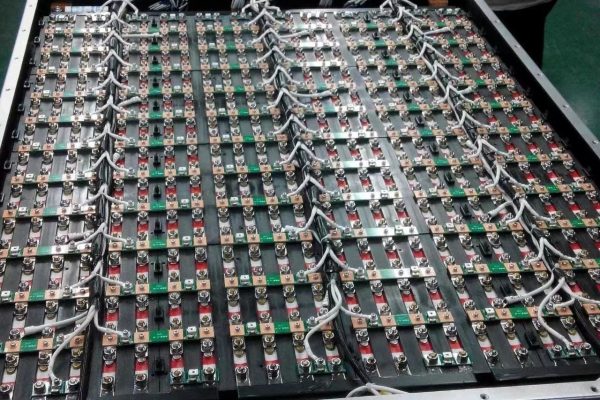Access to reliable and affordable electricity is still a significant challenge for many rural areas worldwide. Traditional energy infrastructure—such as power lines and substations—often does not reach these remote regions due to geographical barriers, high costs, or lack of a stable grid connection. In such locations, an off-grid microgrid solution provides a powerful, scalable, and cost-effective way to deliver clean, sustainable energy directly to communities.
In this article, we will explore the role of off-grid microgrid solutions in rural electrification. We will provide an overview of the technology, highlight a real-world case study, and discuss the key technical considerations and benefits of implementing such systems to ensure energy reliability, economic sustainability, and scalability in rural areas.
1. What is an Off-Grid Microgrid?
An off-grid microgrid is a localized, self-sustaining energy system that can operate independently from the traditional electricity grid. It typically combines renewable energy sources (such as solar, wind, or hydropower) with energy storage systems and a control system to manage energy distribution. These microgrids are designed to provide reliable power to remote or underserved areas, especially in regions where grid extension is impractical.
The key components of an off-grid microgrid include:
- Renewable energy generation: Solar panels, wind turbines, or other renewable technologies.
- Energy storage systems: Typically lithium-ion batteries or other advanced storage options to store excess energy for use during periods without sunlight or wind.
- Microgrid controller: A centralized control system that manages the generation, storage, and distribution of electricity to ensure reliable operation.
- Inverters and converters: Devices that convert the generated energy from DC to AC (or vice versa) depending on the system’s needs.
- Energy management system (EMS): Software that monitors and optimizes the performance of the microgrid, ensuring energy usage is as efficient as possible.
Off-grid microgrids are ideal for rural, remote, or off-grid communities where the traditional grid may not be economically feasible or reliable.
2. Benefits of Off-Grid Microgrid Solutions for Rural Areas
Off-grid microgrid solutions offer numerous benefits to rural communities, particularly in terms of reliable electricity supply, cost savings, and sustainability. Some of the key advantages include:
a) Energy Independence
Off-grid microgrids provide energy independence by enabling rural communities to generate and manage their own electricity without reliance on a central grid. This autonomy helps protect communities from volatility in energy prices or disruptions in grid power due to storms or other disasters.
b) Sustainability
By relying on renewable energy sources like solar and wind, off-grid microgrids help reduce carbon emissions and dependence on fossil fuels. This is especially important in rural areas that may rely on diesel generators or other non-renewable energy sources for power, which can be expensive and environmentally damaging.
c) Cost-Effective
Although the initial installation cost of a microgrid system can be significant, the long-term operational costs are generally much lower compared to traditional grid infrastructure. Rural areas often face high transmission and distribution costs when connecting to a distant grid, making off-grid solutions an attractive alternative.
Additionally, solar and wind power are virtually free once the infrastructure is in place, while battery storage systems allow for the efficient use of energy throughout the day and night.
d) Reliability
Off-grid microgrids are designed to ensure reliable energy supply even in remote areas with unreliable grid connections. Microgrid systems incorporate energy storage to provide backup power during periods of low generation, such as cloudy days or during nighttime. This ensures continuous energy access for critical services like healthcare, education, and agriculture.
e) Scalability
One of the most attractive features of off-grid microgrids is their scalability. These systems can be tailored to meet the specific needs of a rural community, whether it’s a small village or a larger town. As energy needs increase, additional renewable generation capacity or energy storage can be added to the system with minimal disruption.
3. Key Technical Considerations for Off-Grid Microgrids
While off-grid microgrids offer significant advantages, there are several technical considerations that must be addressed to ensure reliable and efficient operation in rural areas.
a) Sizing the System
Properly sizing the system is crucial to ensuring that the microgrid can meet the energy demands of the community without over- or under-sizing the components. The key factors to consider include:
- Energy demand: Assessing the community’s energy consumption patterns is essential for sizing the solar panels, wind turbines, and battery storage.
- Renewable resource availability: The amount of solar or wind energy available in the area will determine the capacity of the renewable generation systems.
- Battery storage: Sizing the storage system appropriately is important to ensure that the community has enough energy reserves to cover periods of low renewable generation.
b) Energy Storage Systems
Battery storage plays a critical role in off-grid microgrids by storing excess energy for use when renewable generation is low. Key factors in selecting the right storage technology include:
- Storage capacity: The system must have enough battery storage to provide energy during extended periods of low generation (e.g., cloudy days or windless periods).
- Cycle life and efficiency: Lithium-ion batteries are commonly used for their long lifespan and high efficiency, but other types of batteries, such as flow batteries, may also be considered depending on the application.
- Temperature management: Batteries can be sensitive to extreme temperatures, so ensuring the system is equipped with proper temperature management systems is essential for maintaining long-term reliability.
c) Grid Connection Capability (Hybrid Systems)
In some cases, an off-grid microgrid may need to connect to the main grid intermittently, for example, during periods of high renewable generation or when energy storage reaches full capacity. Ensuring that the system is capable of safely interfacing with the grid is essential.
- Grid-forming inverters are essential in hybrid systems to ensure that the microgrid can operate both independently and in sync with the grid when needed.
d) Remote Monitoring and Control
Given the remote nature of rural areas, remote monitoring and control systems are vital to ensure the health and performance of the microgrid. Modern microgrids typically come equipped with advanced Energy Management Systems (EMS) that allow for:
- Real-time monitoring of energy generation, storage, and consumption.
- Remote diagnostics and troubleshooting, reducing the need for on-site visits and ensuring minimal downtime.
- Automatic system adjustments based on weather forecasts or changes in energy demand.
e) Local Training and Maintenance
For the microgrid to function reliably over the long term, it is essential to train local personnel in both basic operation and maintenance of the system. This helps ensure that the community has the skills to perform routine checks and handle minor repairs, which increases the system’s longevity and reduces dependency on external technicians.
4. Case Study: Off-Grid Microgrid in Rural Africa
Background
A rural village in Sub-Saharan Africa faced frequent power outages due to unreliable grid power. The village primarily relied on diesel generators, which were expensive to operate and maintain, and caused significant air pollution.
Solution
An off-grid microgrid was deployed to provide reliable electricity to the village using solar PV and battery storage. The key components of the system included:
- 100 kW solar PV array to generate electricity during the day.
- 300 kWh of battery storage to ensure power availability during the night and over extended cloudy periods.
- Microgrid controller to manage energy distribution, battery charging, and power load balancing.
Results
- The microgrid provided reliable electricity to over 500 households, reducing the need for costly diesel generators.
- The village saw a 50% reduction in energy costs, with a payback period of 5 years.
- The system also provided lighting, refrigeration, and power for health clinics, improving the quality of life and supporting local businesses.
Off-grid microgrid solutions are a game-changer for rural areas in need of reliable, sustainable, and cost-effective energy. By combining renewable generation, energy storage, and intelligent control systems, off-grid microgrids can provide energy independence, economic savings, and improved reliability for remote communities.
Through the right combination of technology, system sizing, and local involvement, off-grid microgrids offer a scalable solution for rural electrification, helping to bridge the energy access gap in underserved areas. As microgrid technology continues to evolve, it will play a pivotal role in advancing global energy sustainability and providing rural communities with a brighter, more connected future.









